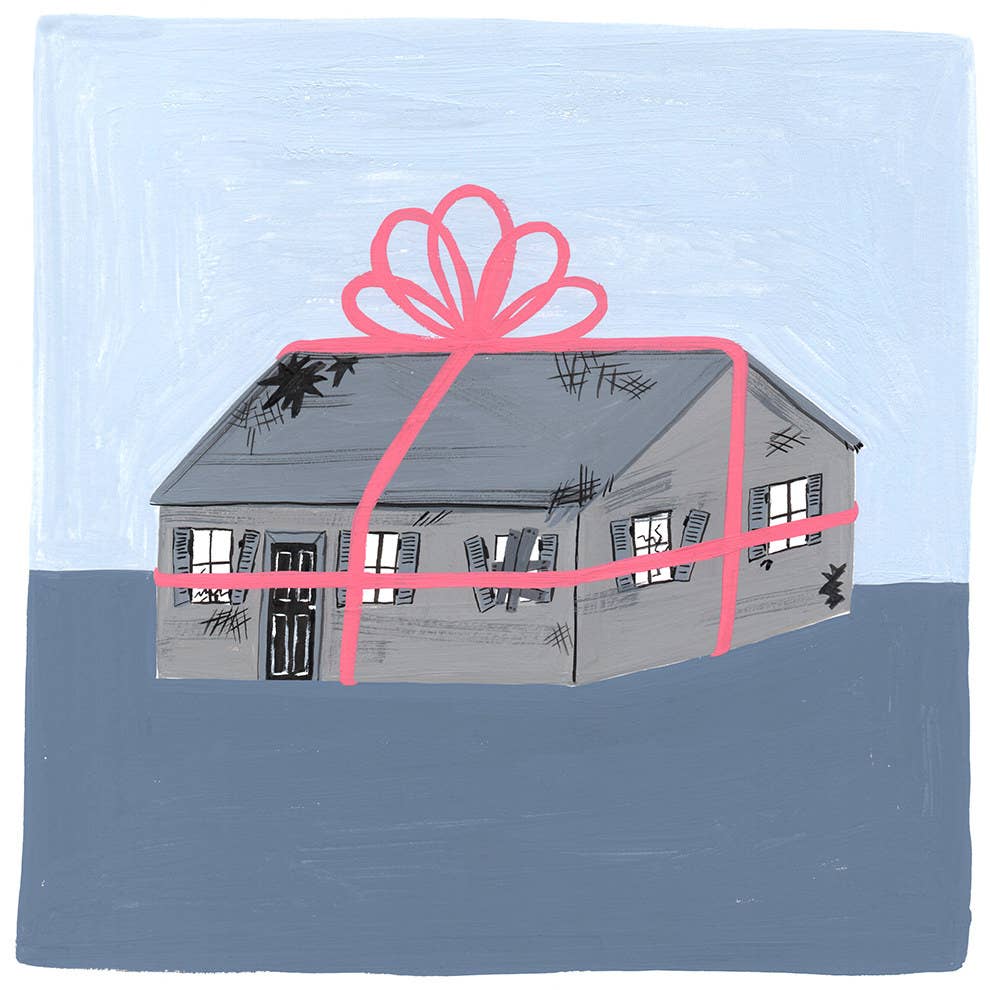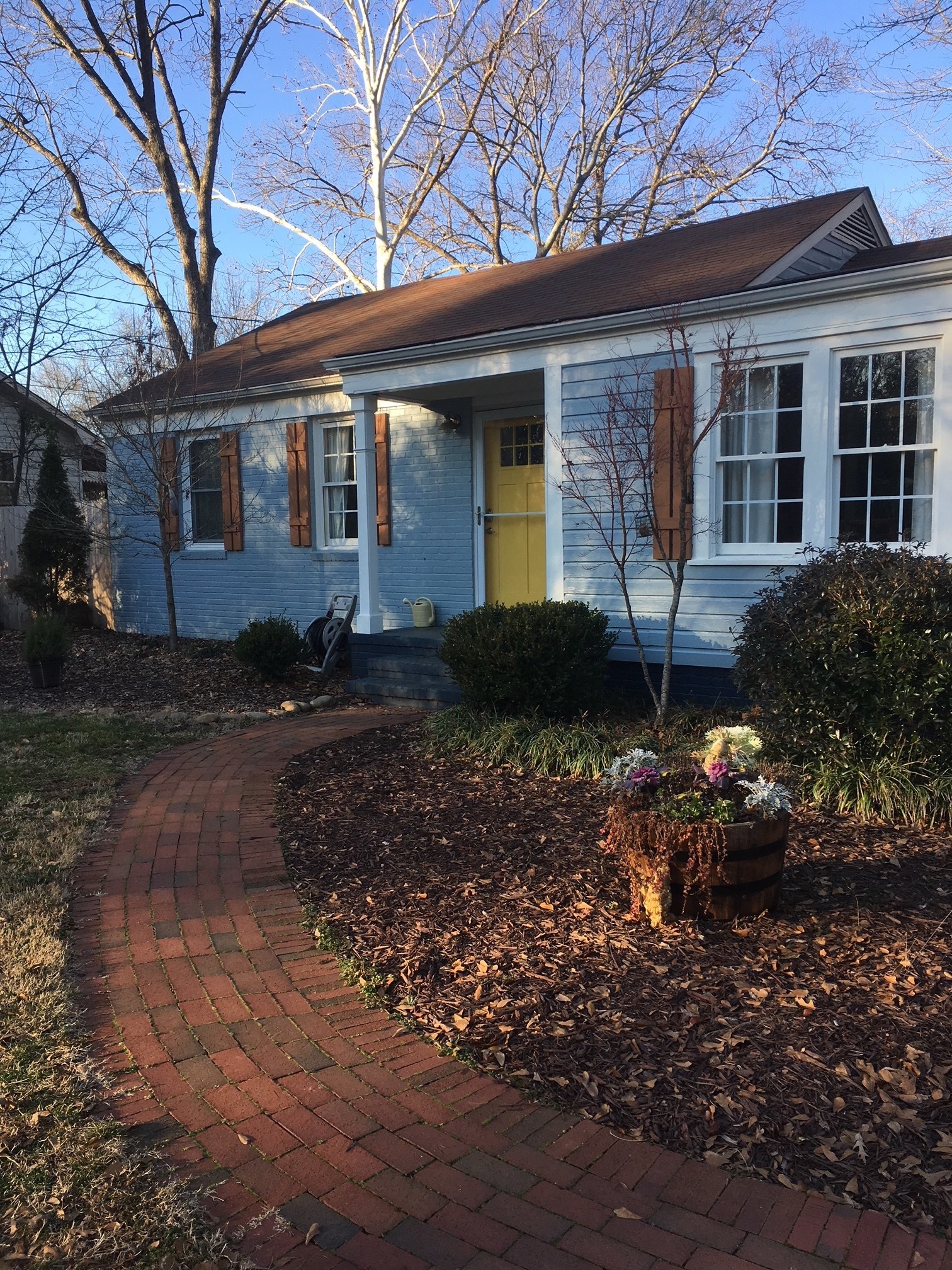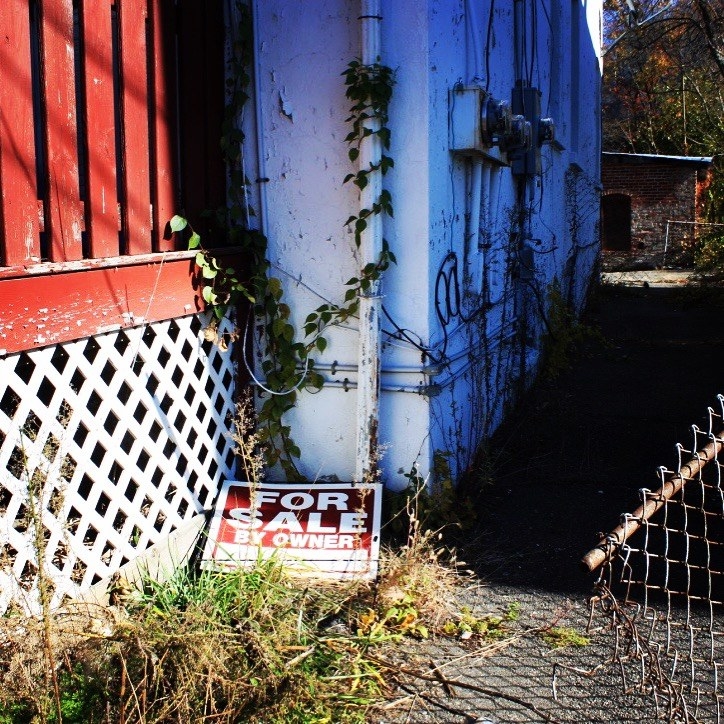
The televisions at my local Y are set permanently to HGTV. Back when staff left the remote in the weight room, Y members drunk with remote-power would flip the station to something inflammatory, usually either MSNBC or Fox, depending on whether they came from in-town Athens or deep-red rest of Georgia. So management decided it was best to pick another channel more likely to redirect members’ rage into something productive, like nice hearty squats. Now it’s all Flip or Flop, Tiny House Hunters, and Texas’s ambassadors to the shiplap industry, Joanna and Chip Gaines, she of the flowing barrel waves and he of the name Chip.
At least when it was Fox news, I could get myself to turn away.
In case you don’t know, Jo and Chip were, until recently, the hosts of HGTV’s Fixer Upper, a show in which everyday Americans buy homes nicer than what the vast majority of the planet’s humans live in so that they can insult the former homeowners who installed perfectly era-appropriate deep-pile carpet, knock down walls between rooms because solitude is terrifying, and take on construction loans that will be paid off a decade after their countertop has become as passé as the Formica one they just ripped out.
The Gaines may be retiring from television, but I’d bet money that the heads of HGTV, mourning the loss of their most reliable fixture, will rerun every episode of Fixer Upper until their freshly remodeled houses age into tomorrow’s outdated monstrosities. And if not, there are plenty of other sources out there to make the place you lay your head feel inferior: interior design websites like Houzz; home improvement blogs with doe-eyed fraternal twins plucked straight from the set of Gattaca; Pinteresters who manipulate digital shots of their bathrooms in post-edit to achieve a soft, inviting alabaster seldom found in nature and even more rarely in suburban powder rooms. Together, they’ve moved the baseline of tasteful so high that I’m struggling to not believe — as I look around my water- and airtight home in a safe neighborhood with its own listserv — that maybe I’m not really doing as okay as I thought I was.
Because here’s the thing: HGTV isn’t Robin Leach training a voyeur’s eye on the rich and famous. Those Fixer Upper guests are public servants and middle managers, that repurposed pallet entertainment center on Pinterest was assembled and hand-distressed by a school media specialist, and that white flokati rug is in a house lived in by a stay-at-home mom with three toddlers and a Labradoodle. It all seems to be saying that if you can’t even get around to painting the wood-paneled wall in the spare bedroom, never mind ripping down the paneling and hand-plastering like some Italian artisan, what the hell is wrong with you?
What I mean, of course, is what the hell is wrong with me?
I didn’t like being a kid. It was oppressive, having people feed you food they wouldn’t believe you didn’t like and command you to sleep when you weren’t tired. My favorite childhood game to play was grown-up, which mostly involved pretending to pay bills and acting dejected because there wasn’t enough in the coffer to write out the last check. It made me feel responsible for all the things I couldn’t have, which felt better than leaving that in someone else’s hands. People always told me back then that I’d miss childhood when I was older, but I’m older now and I will gladly accept crow’s feet over the plump, dewy skin of youth if it means the right to self-determine. In adulthood, you don’t have to ask permission.
Unless you have a landlord. Well into my thirties, I still had to call and ask someone if I could paint a wall or hang a shelf, and that was so frustrating it made me, on more than one occasion, literally cry. I have long resented landlords. Landlords have kicked me and my family out of several places, not because we didn’t pay on time or were in any way negligent of their properties, but because they were handing them over to their freshly adult children, who had the sense to be born to parents who could afford multiple deeds. Landlords serve to remind you that the world is made up of two kinds of people: those for whom a home is a liquid asset, and those for whom it’s an abstraction.
Landlords serve to remind you that the world is made up of two kinds of people: those for whom a home is a liquid asset, and those for whom it’s an abstraction.
I’m too student-loan-poor for a mortgage lender to even consider letting me become house-poor, but two years ago, when my partner and I were displaced yet again by a landlord’s returning son, I was determined to never sign another lease again. We put together the money we would have had to come up with for a security deposit and first and last month’s rent and put it instead toward the smallest possible down payment for a little house in Athens, Georgia, a 1950s cottage that was modest even back in its day. But the inspector said it was in solid shape, and none of the owners in the ‘70s and ‘80s ever got the idea, or had the money, to carpet over the original hardwood floors. On closing day I was full of joy and anxiety, like a new parent. And like a new parent I had no idea what to do when things went wrong, even when the things that went wrong were minor, like some peeling of the gypsum board paper on a wall we wanted to repaint. That’s where the internet came in.
You can learn from home improvement blogs, for example, how to do basic drywall repair. Blogs may also plant the idea in your head that, should your drywall show any tape seams or ugly orange-peel texture, you should skim-coat it to create a smooth, plasterlike finish, which entails rolling thin layers of joint compound over the surface and lightly sanding in between coats. I don’t recall the blogs mentioning that sanding drywall compound creates a fine dust that will remain in your house, and possibly your lungs, eternally, and that each wall surface will require several coats with days of drying time in between, and that you will inevitably have to start over when you find air bubbles and dog hair in the last layer you applied, and that you must essentially choose between, say, chasing your dreams or mixing buckets of joint compound in order to complete this task.
However, you may learn from home improvement blogs how to identify different wall materials, and should your tract house have been built on the cheap in the early to middle part of the 20th century, you may discover that you are not, in fact, dealing with drywall but with beaverboard, a compressed wood-fiber product that is lighter, better insulating, and far more flammable than today’s Sheetrock. You will wonder if the creature you hear scuttling behind your walls, which you hope is merely a squirrel, is chewing through the ancient wiring and if so, how long it will take the spark to ignite the tinder that constitutes your walls, and if it happens when you’re not home, whether the dogs who keep messing up your attempts at skim coating will make it out alive. It sure was disappointing to be told by these home improvement blogs that the only home I’ve ever owned sought to burn me to cinder while I slept.

I’m a Zillow voyeur now, but I’ve been dreaming about the miracles behind other people’s walls for a very long time. In elementary school, I remember my bus dropping kids off at the townhouses two miles from the triple-decker apartment where I lived, and me raging with envy at the kids who had stairs inside their apartments. Imagine sledding down those carpeted steps in a lubed-up laundry basket. Imagine a pit bull waiting to slurp you up at the bottom.
When I told my mother I wanted to live in such a place, she answered that we once had. Our family’s first home was in that public housing, she told me. We fled when the cockroaches got so bad that my mother would turn on the lights in my room and see them scuttle underneath my crib, and she dropped down to some prepubescent weight because she wouldn’t eat on account of the cockroaches nesting in the oven.
“It’s the projects, Xhenet,” she said.
That just made them sound better, like art.
The point is that the cockroaches are in the before houses, not the after ones. And it’s exhausting to live in a before, forever chasing an after.
My house in Georgia doesn’t have a second floor, so this dream of sledding down a flight of stairs remains unfulfilled, but it does simulate the townhouse of my youth in that it has cockroaches — the giant ones that exist in the South, that refuse to die no matter how much you pay your quarterly exterminator. They’re solitary creatures that come in from breaches between the indoors and outdoors; they’re so large that you measure them in inches, and you can no more keep them from your home than you can a spider or an errant moth. I understand this to be true when I encounter them at other people’s houses, anyway. At our house, I consider every cockroach that passes our threshold to be a sign of failure. My partner takes offense at this, because it implicates him too.
There was an episode of Fixer Upper in which Chip grosses out Jo by swallowing a cockroach that’s been left to decompose in the living room of a remodel. It was genuinely disgusting, but the point is that the cockroaches are in the before houses, not the after ones. And it’s exhausting to live in a before, forever chasing an after. We could, theoretically, take care of the cockroach swarms that I’m certain live behind our walls by ripping down the beaverboard and starting all over again with modern, code-compliant, fire-retardant materials, and if we finished them off with two coats of bright white paint and some severe geometric wall art, the cockroaches would have a more clearly defined threshold that they might actually understand not to cross.
But I’ll be honest, that’s probably not going to happen. No matter what the internet tells you, it’s easier to accept nature than it is to do drywall repair.
On Love It or List It, couples undertake substantial renovations to their homes to make them bigger and better while simultaneously shopping for other homes which are already bigger and better. The question that arises is: Do you make your dream home, or does your dream home already exist, waiting to be discovered? Swap “home” with “life,” and it’s an existential question, which would probably require a different set of sponsors.
The apartment where I spent much of my childhood, after we left the projects, was the bottom floor of the kind of triple-decker house that lines the majority of streets in most New England factory towns. I never realized there was anything distinct about these buildings until after I left the Northeast, since so many of the kids I knew lived in them, and so that’s where I learned to exoticize and desire anything that wasn’t a three-story rectangle. Large apartment buildings with shared halls: big city. Condos: people who’ve been to Florida. Houses: rich people.
In a DIY I’ve never seen duplicated on any blog, the landlord painted a paper plate and applied it to the wall to cover a hole where the exhaust pipe for a coal-burning stove had once been.
We weren’t yet rich, so we couldn’t yet live in our own house, but at least there were no cockroaches in this apartment. It cost 300 bucks a month, which in today’s dollars, in the city of my youth, is probably still 300 bucks a month. The landlord lived on the second floor and fixed everything himself, though this was years before DIY blogs like Young House Love convinced everyone that you, too, can redecorate your entire home in your spare time with quirky flea market finds or, failing that, Chinese-manufactured TJ Maxx home goods that simulate folksy American antiques. In a DIY I’ve never seen duplicated on any blog, the landlord painted a paper plate and applied it to the wall to cover a hole where the exhaust pipe for a coal-burning stove had once been. Thrifty and resourceful. He was also an urban homesteader, years before both doomsday preppers and small-town food bloggers made canning and pickling into a fun pastime. He kept rabbits in a hutch in his work shed out back, and once he brought home a goat that he tied up outside the building for an afternoon. When the shotgun sounded, it meant one of the creatures was dinner.
When my father left for the last time, the landlord took over some of a father’s work. He took me swimming in the public pool and fishing at reservoirs where fishing was not allowed. He bought me the pogo stick that I had begged for and been despondent over not receiving for my birthday. I constructed my own little nest in a corner of the houseboat he was building in the back of the parking lot, which, because I had never been to Sunday school, held no parallels to any biblical stories. Before he shot them, he let me pet the rabbits.
But these were not the gifts of a father to his heirs — they were transactions, because we were renters. After the first time the landlord took me to the work shed to collect payment, I ran back inside and told my mom that the landlord had shown me a funny picture instead of telling her what he actually showed me: how man and woman play house, which looks very different when the woman isn’t a woman but a child. I didn’t think it through before I began talking, so I don’t know what I would’ve answered if she asked me what was so funny about the picture. I just remember needing to tell her something, despite having promised the landlord I’d say nothing, and it being important that the thing be funny, because I felt funny in a way that I didn’t know yet was different than ha-ha funny. You know how it is when you’re a kid, when you’re not sure of the language to use to say the thing you really have to say, so you kind of do a little dance around it and hope it points to the thing you’re really trying to get at?
Let’s talk about reclaiming wood, which is a process whereby worm-eaten, nail-bitten, weather-beaten pieces of lumber are made valuable by virtue of changing their name and transferring them from a place of neglect, like a barn in an advanced state of decay, to a place of endless want, like the suburbs. This is a process that fascinates me, because it seems less a physical than a psychological transformation, and in that sense is a more manageable DIY than the kind that requires power tools.
But I’ve not been able to abracadabra this. The wood at our house develops dry rot, not character. I learned from This Old House that soft wood is called punky, which sounds charming, but much like the punks you invite into your life in your twenties, it’s less charming when you live with it. The Dutch lap siding we replaced when we bought the house a year and a half ago is failing in a way we’ve chosen to ignore. Our tiny back deck looks like it’s been struck with a small meteor, a perfect oval over a span of 2x6s where the dogs have chewed away bits of rotted pine. There’s a similar hole gouged in the flooring of the tiny corner room my partner uses as his office, and our fix has been to be strategic about the positioning of his office chair.
I’ve learned to use the term “starter home” to describe ours, hoping that acknowledging its inadequacies at least shows our self-awareness, if not humility.
Houzz introduced me to the Japanese design aesthetic of wabi-sabi, described by Leonard Koren, the white American guru of the ancient Zen art, as “the beauty of things imperfect, impermanent, and incomplete, the antithesis of our classical Western notion of beauty as something perfect, enduring, and monumental.” On Houzz, this is represented as moss growing over stone pathways, paint chipping from a brick façade, that beautifully marbled reclaimed wood. At my house, it is weeds, mildewed caulk, decay.
When we first bought our house, I felt something entirely foreign and new to me, which was a sense of serenity. And I wasn’t prepared for how jarring being shaken from a state serenity is. I’d done the walk-throughs, I’d studied the paperwork, but until the home renovation shows and blogs and websites, I somehow missed that it was too small, too dated, the ceilings too textured, the kitchen too cramped. Even the hardwoods, a feature I’d been confident would be enviable, are in need of refinishing; blobs of vintage dog pee like Rorschach tests have stained the floorboards. There’s a section in the hallway where it’s obvious the heating air return had once been, and rather than stagger the floor planks when covering it to match the pattern in the rest of the house, they simply filled it in with a rectangle of wood. I didn’t notice it at first, and now it’s all I see in there, despite it being covered with a 3x5 rag rug that the dogs take turns mangling.
I’ve learned to use the term “starter home” to describe ours, hoping that acknowledging its inadequacies at least shows our self-awareness, if not humility. It’s how I feel about passing gas among company: better to laugh about it than sit in uncomfortable, cognizant silence.

The landlord of our triple-decker apartment terminated the lease when I reached adolescence, a timing I’ve never bothered to pretend was incidental. It was an unplanned but serendipitous move, because it led us to a single-family house in a neighboring town in which my mother had dreamed but not dared to believe she could live. When the owners called to tell her that they’d approved the lease, she doubled over in sobs of joy. By this point she had a boyfriend with four kids of his own, and eventually they all joined my brother and me in that little ranch home, a three-bedroom, one-bath with a big yard and a failing septic system. We kids, all of us lifelong apartment dwellers, complained bitterly about our schoolmates, whom we considered rich and snobby because they lived in raised ranches, but the truth is that all of us benefited in ways we can’t fully know from having access to woods and a decent school system and a measured distance from those with a hungry eye on latchkey kids.
In short, my mom and stepdad’s dream-come-true would be Jo and Chip’s waking nightmare.
And yet I can imagine what Jo and Chip would say about that place. Every square inch of the 1,056 square feet was carpeted, including brown plush in the bathroom and gray industrial in the kitchen. A 5-by-7-foot photo mural of a pond surrounded by autumn maples was glued onto a wall in the living room. My stepdad kept the requisite junk car on cinder blocks in the side yard, tinkering in spurts to get the pistons firing just enough to enter her in the next demolition derby at Riverside Amusement Park in Agawam, Massachusetts. Each panel of the car had the name of one of us kids spray-painted on it, while my mom’s name got big block letters on the hood. He never won a demolition derby, but you wouldn’t have known that by listening to us in the bleachers.
In short, my mom and stepdad’s dream-come-true would be Jo and Chip’s waking nightmare. We lived our family’s apex in a home that, by the standards established by HGTV, wouldn’t even qualify as a before. What does it matter that it’s safe if all you see is that it’s tacky?
And yet, even back then — after we finally hodgepodged together something resembling the kind of family I drew pictures of in kindergarten, stick figures holding stick hands outside a stick rectangle that represented a house — I knew I would flee as soon as I could, even if the landlords let my parents stay there for eternity, because I never could get that kind of life to sit quite right with me, either.
I think I resent Jo and Chip most for their certainty about what a home looks like, their confidence and competence in fixing up what feels wrong. I’ve learned how to replace light fixtures, install a bathroom vanity, even build a garden shed, but each project has ended not with perfection but with an exasperated cry of good enough.
The thing about good enough is that you know, when you say it, that it never is.
I have a life now that is, as they say in the South, blessed. My current home has one more bathroom, six fewer humans, and 300 more square feet than the one that made my mother cry from happiness. It’s in a desirable school district which, because I’m childless, I appreciate mostly for how it inflates our property value.
I have gratitude and I have want. These are things that I’m trying to figure out how to make live together.
Last year we threw a bag of wildflower seeds onto an otherwise barren patch of dirt in front of our house just to see what would happen, and what happened is an explosion of cosmos, poppies, snapdragons, and baby’s breath that grow so tall they can’t support their own weight. They tangle with each other and the undergrowth of weeds in the battle for sunlight. This feral quality is native to wildflowers — hell, it’s in the name — so I shouldn’t really be disappointed that they have grown completely out of our control. It is what it is, so they say, and what we end up with doesn’t really tell us if we did it wrong or did it right. ●

Xhenet Aliu’s new novel, Brass, is now available from Random House. Her debut fiction collection, Domesticated Wild Things, and Other Stories, won the Prairie Schooner Book Prize in Fiction. Her stories and essays have appeared in Glimmer Train, the Barcelona Review, American Short Fiction, and elsewhere. She holds an MFA from the University of North Carolina Wilmington and an MLIS from the University of Alabama. A native of Waterbury, Connecticut, she was born to an Albanian father and a Lithuanian-American mother. She now lives in Athens, Georgia, and works as an academic librarian.
For more information on Brass, click here.
